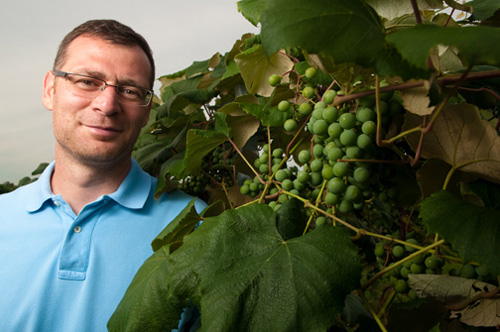EAST LANSING, Mich. — A Michigan State University researcher is working with vintners to introduce passito, an age-old Italian wine to the United States.
Passito, traced to 800 B.C. in Italy, is also known as straw wine. The grapes for passito are typically hand-picked and allowed to dry on cellar racks or, more traditionally, on mats of straw.
Many industry experts believe ice wine – dessert wine pressed from frozen grapes at the peak of ripeness and can sell around $90 per bottle – could be the signature wine for the northern United States. Passito, however, could be just as distinct but also a lower-risk option for wine producers, says Paolo Sabbatini, MSU viticulturist and native Italian.
“No one is making passito commercially in America, and this old Italian technique can be pivotal in cool-cold climate viticulture,” he said. “It can save unripe grapes from being wasted in a challenging year as well as produce a high-quality, high-value product, distinctive to the northern U.S.”
Typically, growers of ice-wine grapes need the perfect winter storm – the arrival of temperatures in the teens to freeze ripe grapes while they are on the vine. This year’s fickle winter, however, has put the entire North American ice wine crop on hold. In the last two months, weather has been up and down, switching from snow to rain and not delivering the successive string of cold days needed to harvest frozen grapes, according to an industry publication.

Grapes slated for passito wine dry in the safety of a cellar, which could provide the signature wine for the northern United States. Photo courtesy of MSU.
Since it isn’t necessary to harvest grapes used for passito during a perfectly timed freeze, this age-old process can become a reliable source of income for the industry, he added. These grapes are dehydrated safely indoors and are pressed once they meet the chemical specifications of the winemaker.
“The percentage of market share for dessert wines is growing,” Sabbatini said. “In the northern United States, producers could capitalize on the growing market and look forward to having passito every year!”
For more details on how MSU is helping Michigan’s wine industry, visit https://news.msu.edu/story/9934/.
*Source: Michigan State University

